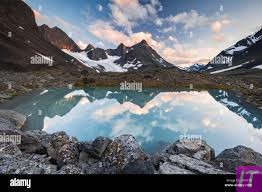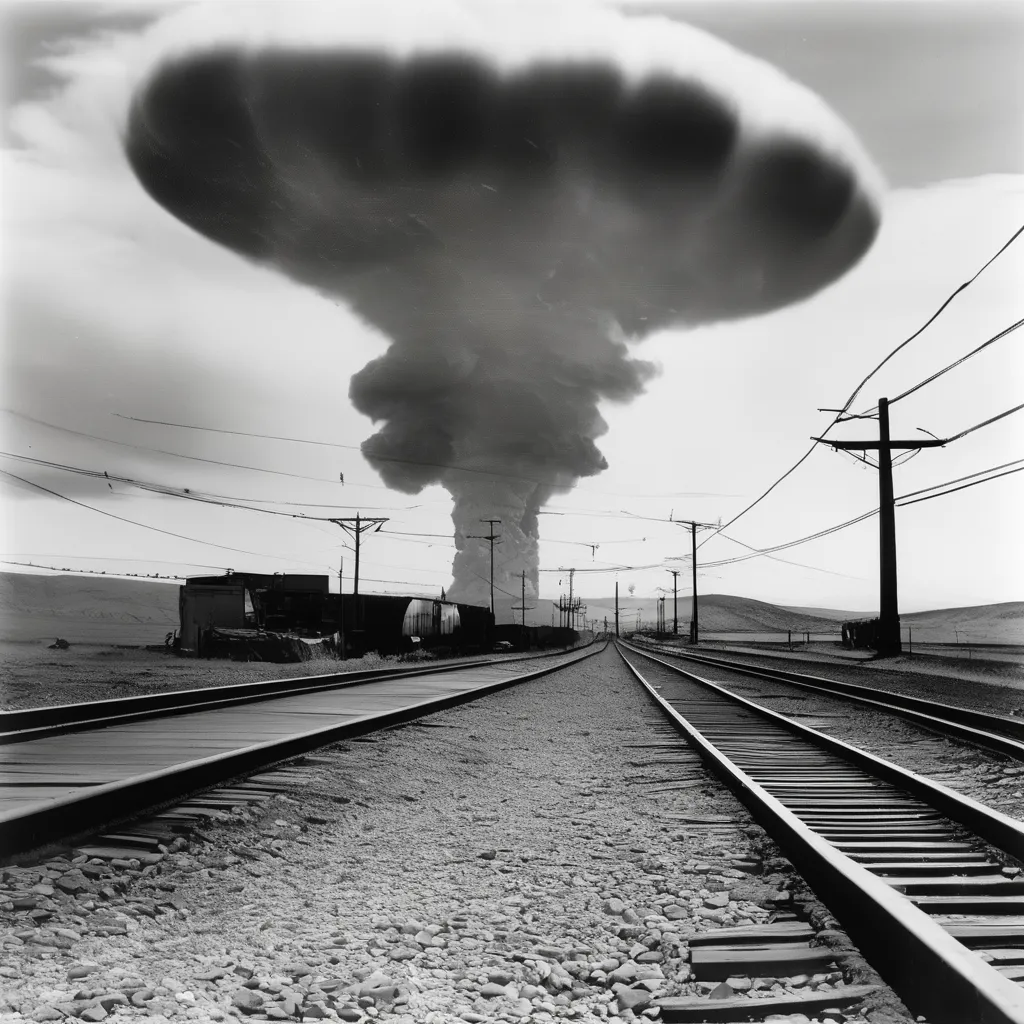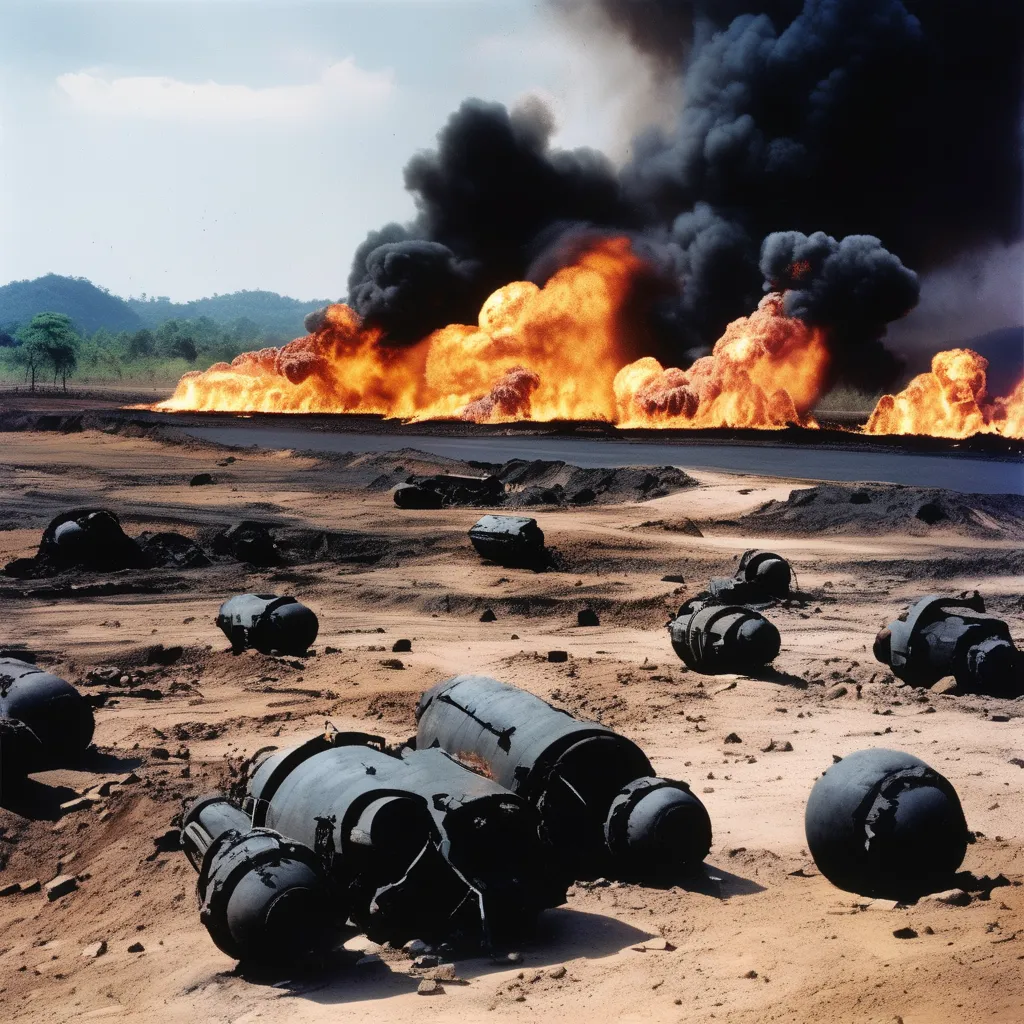Introduction to Lapland Glacial Valley
The Lapland Glacial Valley, an exquisite natural marvel, is a testament to the extraordinary geological and environmental forces that have shaped our planet. Nestled in the heart of the Arctic, this valley offers a unique glimpse into the Earth’s glacial past and its continuous evolution. The region is characterized by its dramatic landscapes, comprising vast ice fields, sharp peaks, and deeply carved valleys, formed over millennia by the relentless movement of glaciers. As an area of significant geological interest, the Lapland Glacial Valley provides indispensable insights into the processes driving glacial formation and the resultant geomorphological features.
Geological History of Lapland Glacial Valley
The geological history of the Lapland Glacial Valley is a profound narrative extending back millions of years. It all began in the Pleistocene epoch, a geological time frame marked by repeated cycles of glaciation. These cycles played a pivotal role in carving out the valley’s present features. The Lapland region, previously covered by ancient seas, witnessed substantial ice sheet advancements and retreats, leaving behind an indelible imprint on the landscape. The valley’s bedrock consists primarily of Precambrian gneisses and granite, which have endured extensive weathering and erosion through multiple glaciations. Understanding this geological history is crucial for comprehending the present-day topography and the mechanisms underlying glacial valley formation.
Formation Processes of Glacial Valleys in Lapland
The formation of glacial valleys, such as the Lapland Glacial Valley, is primarily governed by the processes of glacial erosion and deposition. Glacial valleys are typically U-shaped, a direct consequence of the powerful erosive action of glaciers as they move downhill. This process, known as glacial plucking, involves the glacier picking up and transporting large chunks of bedrock, which contributes to the widening and deepening of the valley. Additionally, the abrasion caused by rock fragments embedded in the glacier’s base grinds against the valley floor and walls, further sculpting the landscape. The interplay of these processes over extended geological periods has resulted in the characteristic features observed in Lapland’s glacial valleys.
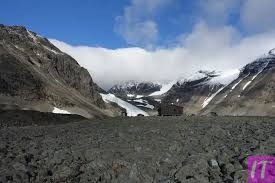
Climate and Environmental Conditions of Lapland Glacial Valley
The Lapland Glacial Valley experiences an extreme Arctic climate, characterized by long, harsh winters and brief, cool summers. The valley’s climatic conditions are instrumental in maintaining the glaciers that define its landscape. Average temperatures remain well below freezing for most of the year, with summer temperatures seldom rising above 10°C. Precipitation in the region is relatively low but usually falls as snow, contributing to the glacier mass. These climatic factors create a unique environment where glacial processes can continue unabated, preserving the area as a natural laboratory for studying glacial dynamics and climate change.
Flora and Fauna in the Lapland Glacial Valley
Despite its harsh climatic conditions, the Lapland Glacial Valley is home to a diverse range of flora and fauna specially adapted to the extreme environment. Tundra vegetation, including hardy grasses, mosses, and lichen, dominates the landscape, providing a crucial food source for the valley’s herbivores. Animal life includes species such as reindeer, arctic foxes, and various bird species that migrate during the short summer. These organisms exhibit remarkable adaptations such as thick fur, insulating layers of fat, and behaviors aimed at conserving energy. The ecological dynamics of the valley offer fascinating insights into the resilience and adaptability of life in one of Earth’s most challenging habitats.
Human History in the Lapland Glacial Valley Region
Human history in the Lapland Glacial Valley region is deeply intertwined with the indigenous Sami people, whose presence dates back thousands of years. The Sami have developed a rich cultural heritage and a sustainable way of life centered around reindeer herding. Historical records and archaeological evidence indicate that early Sami settlements were strategically located to exploit the valley’s natural resources while minimizing environmental impact. The introduction of modern infrastructure and tourism has brought significant changes, yet the Sami continue to play a vital role in preserving the cultural and ecological fabric of the region. Understanding the valley’s human history provides a broader context for appreciating its cultural and natural significance.
Impact of Climate Change on Lapland Glacial Valley
Climate change poses a critical threat to the Lapland Glacial Valley, with observable impacts on its glacial and ecological systems. Rising global temperatures have led to accelerated glacial melting, resulting in reduced glacier mass and altered hydrological patterns. This melting not only affects the valley’s physical landscape but also has cascading effects on local ecosystems. For instance, changes in the timing and availability of water can disrupt the life cycles of flora and fauna. Moreover, the permafrost, which underpins much of the valley’s tundra, is at risk of thawing, potentially releasing significant amounts of greenhouse gases. Monitoring and mitigating these changes are imperative for the valley’s long-term conservation.
Current Conservation Efforts in Lapland Glacial Valley
Conservation efforts in the Lapland Glacial Valley are multifaceted, aiming to preserve its unique landscapes and biodiversity. These efforts involve a combination of local, national, and international initiatives. One primary focus is the protection of glacial environments through the establishment of nature reserves and the implementation of regulations that minimize human impact. Conservation programs also work closely with the indigenous Sami community to integrate traditional knowledge with modern conservation practices. Furthermore, research initiatives are continuously conducted to monitor ecological changes and develop strategies to mitigate the effects of climate change. These combined efforts are essential for safeguarding the valley’s ecological integrity for future generations.
Tourism and Its Effects on the Lapland Glacial Valley
Tourism in the Lapland Glacial Valley has seen substantial growth, driven by the region’s striking natural beauty and cultural significance. While tourism provides economic benefits and raises awareness about the valley’s natural and cultural heritage, it also presents environmental challenges. Increased foot traffic can lead to soil erosion, vegetation damage, and wildlife disturbance. Additionally, the infrastructure required to support tourism can result in habitat fragmentation and pollution. Sustainable tourism practices, including regulated visitor numbers, eco-friendly facilities, and guided tours, are crucial to mitigating these impacts and ensuring that tourism contributes positively to the conservation of the valley.
Scientific Research Conducted in Lapland Glacial Valley
The Lapland Glacial Valley is a focal point for scientific research, attracting geologists, climatologists, biologists, and ecologists from around the world. Research in the valley encompasses a broad range of disciplines, from studying glacial dynamics and geomorphological processes to examining the impacts of climate change on local ecosystems. Long-term monitoring projects are essential for understanding temporal changes in glacial mass, temperature, and precipitation patterns. Ecological studies focus on the adaptive strategies of flora and fauna, while anthropological research explores the interactions between human communities and their environment. The insights gained from these studies are vital for advancing our knowledge of Arctic environments and informing global climate policy.
Hydrology of the Lapland Glacial Valley
The hydrology of the Lapland Glacial Valley is intricately linked to its glacial and climatic conditions. Glaciers serve as natural reservoirs, storing vast amounts of water that are gradually released through melting processes. This meltwater feeds into a network of streams and rivers, which play a crucial role in sustaining the valley’s ecosystems. Seasonal variations in glacial melt rates lead to fluctuations in water flow, influencing the distribution and availability of water resources. Hydrological studies in the valley focus on understanding these dynamics, which are essential for predicting the effects of climate change on water availability and managing water resources sustainably.
Comparative Analysis of Lapland and Other Glacial Valleys
Comparative analysis of the Lapland Glacial Valley with other glacial valleys worldwide reveals both unique and common features. While all glacial valleys share certain characteristics, such as U-shaped profiles and glacially carved landscapes, regional differences in climate, geology, and glacial history result in distinctive attributes. For example, glacial valleys in the European Alps exhibit different vegetation patterns and wildlife compared to those in Lapland, driven by variations in altitude, latitude, and local climate. Comparative studies enhance our understanding of glacial processes and their environmental impacts, providing broader perspectives on glacial valley ecosystems and informing conservation strategies across different regions.
Seasonal Variations in the Lapland Glacial Valley
Seasonal variations profoundly influence the Lapland Glacial Valley, dictating the rhythms of both abiotic and biotic components of the ecosystem. Winter brings frigid temperatures and heavy snowfall, leading to the accumulation of snow and ice and a corresponding decrease in biological activity. The brief summer period, marked by melting glaciers and increased water flow, triggers a surge in plant growth and animal activity. These seasonal dynamics are critical for the life cycles of many species and the overall functioning of the ecosystem. Understanding these variations is essential for predicting ecological responses to climate change and managing the valley’s natural resources effectively.
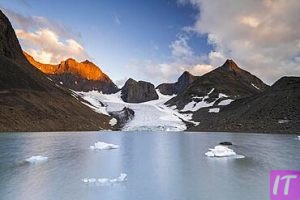
Geomorphological Features of the Lapland Glacial Valley
The geomorphological features of the Lapland Glacial Valley are a striking testimony to the power of glacial processes. The U-shaped valley profile, steep valley walls, and rugged peaks are all products of extensive glacial erosion. Moraines, consisting of unsorted glacial debris, are prominent features marking past glacier extents. Other notable geomorphological structures include cirques, fjords, and ice-dammed lakes, each telling a story of glacial advance and retreat. These features are not only visually stunning but offer valuable clues about the valley’s geological past. Detailed geomorphological mapping and analysis are essential for reconstructing the valley’s glacial history and understanding ongoing landscape evolution.
Cultural Significance of Lapland Glacial Valley
The Lapland Glacial Valley holds profound cultural significance for the indigenous Sami people, whose traditions and way of life are intimately connected to the landscape. Reindeer herding, a central aspect of Sami culture, has been practiced for centuries, with the valley providing critical grazing grounds. The valley’s natural features and seasonal cycles are deeply embedded in Sami folklore and spiritual beliefs, reflecting a deep, symbiotic relationship with the land. Preservation of the cultural heritage of the Sami, including their language, customs, and traditional knowledge, is vital for maintaining the valley’s cultural and ecological integrity.
Lapland Glacial Valley in Art and Literature
The breathtaking beauty of the Lapland Glacial Valley has inspired countless works of art and literature. Artists and writers have long been captivated by its dramatic landscapes, capturing the interplay of light and shadow on ice and rock. From evocative landscape paintings to poetry and prose that explore the valley’s ethereal atmosphere, the Lapland Glacial Valley has served as a poignant muse. These artistic and literary representations not only celebrate the valley’s aesthetic appeal but also highlight its profound impact on human imagination and creativity. They raise awareness about the region’s natural value and the need for its conservation.
Best Practices for Sustainable Tourism in Glacial Valleys
Sustainable tourism in glacial valleys, including the Lapland Glacial Valley, necessitates a balanced approach that minimizes environmental impact while maximizing educational and economic benefits. Key practices include limiting visitor numbers to reduce pressure on fragile environments, promoting eco-friendly transportation and accommodation options, and providing educational programs about the valley’s ecological and cultural significance. Additionally, engaging local communities in tourism planning and management ensures that economic benefits are equitably distributed and cultural heritage is respected. Implementing and maintaining these best practices is essential for safeguarding the valley’s natural and cultural resources in the face of increasing tourist demand.
Challenges in Preserving the Lapland Glacial Valley
Preserving the Lapland Glacial Valley presents several challenges, including the impacts of climate change, tourism pressure, and potential conflicts between conservation and development. Rapidly rising temperatures threaten the integrity of glaciers and permafrost, with far-reaching consequences for local ecosystems. Increasing tourist numbers can lead to environmental degradation if not managed sustainably. Additionally, balancing the needs of local communities, particularly the Sami, with conservation goals requires careful, inclusive planning. Addressing these challenges necessitates a comprehensive strategy that integrates scientific research, community engagement, and robust policy frameworks to ensure the valley’s long-term protection.
Technological Advances in Studying Glacial Valleys
Advances in technology have revolutionized the study of glacial valleys, offering new tools and methodologies for understanding these complex environments. Remote sensing technologies, such as satellite imagery and LiDAR, enable detailed mapping and monitoring of glacial landscapes. Geographic Information Systems (GIS) facilitate the analysis of spatial patterns and changes over time. Additionally, advances in climate modeling provide predictive insights into future changes in glacial dynamics and environmental conditions. These technological innovations are crucial for advancing our knowledge of the Lapland Glacial Valley and informing effective conservation and management strategies.
Future Perspectives on the Lapland Glacial Valley
Looking forward, the future of the Lapland Glacial Valley will be shaped by our collective efforts to address climate change and promote sustainable practices. Continued research and monitoring are essential for understanding the impacts of environmental changes and developing adaptive management strategies. Strengthening conservation efforts, including expanding protected areas and enhancing collaboration with indigenous communities, will be critical for preserving the valley’s ecological and cultural heritage. Moreover, fostering global awareness and engagement through education and responsible tourism can ensure that the Lapland Glacial Valley remains a treasured natural wonder for generations to come.
In conclusion, the Lapland Glacial Valley stands as a majestic testament to the powerful forces shaping our planet’s landscapes and the intricate interplay of climate, geology, and biology. Its rich geological history, unique flora and fauna, and profound cultural significance underscore the importance of preserving this remarkable region. Through continued research, sustainable tourism practices, and robust conservation efforts, we can protect the Lapland Glacial Valley, ensuring that its natural and cultural wonders endure for future generations to study, appreciate, and enjoy.
